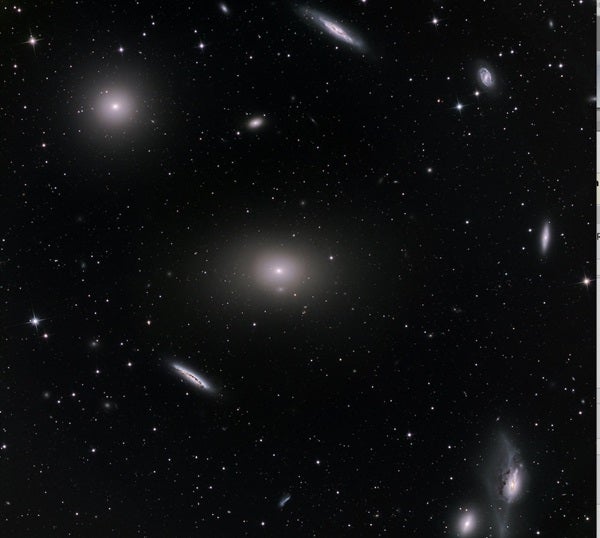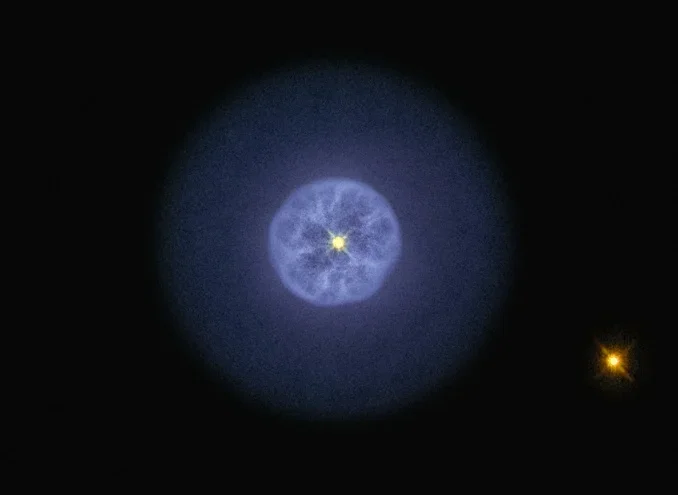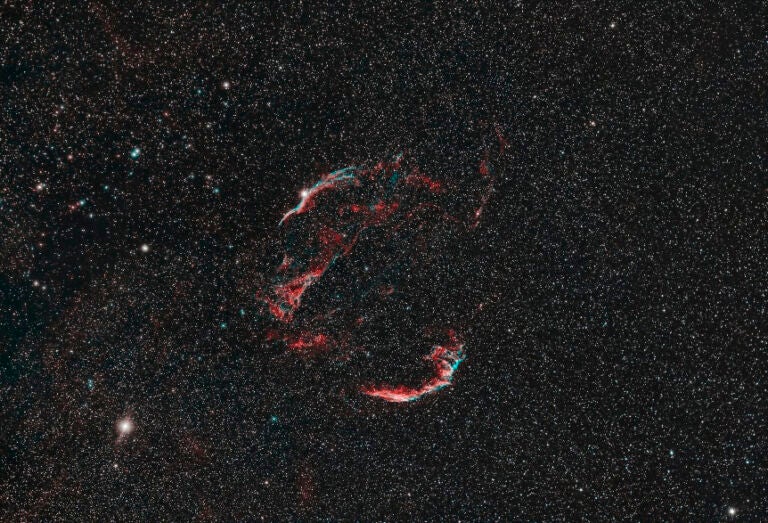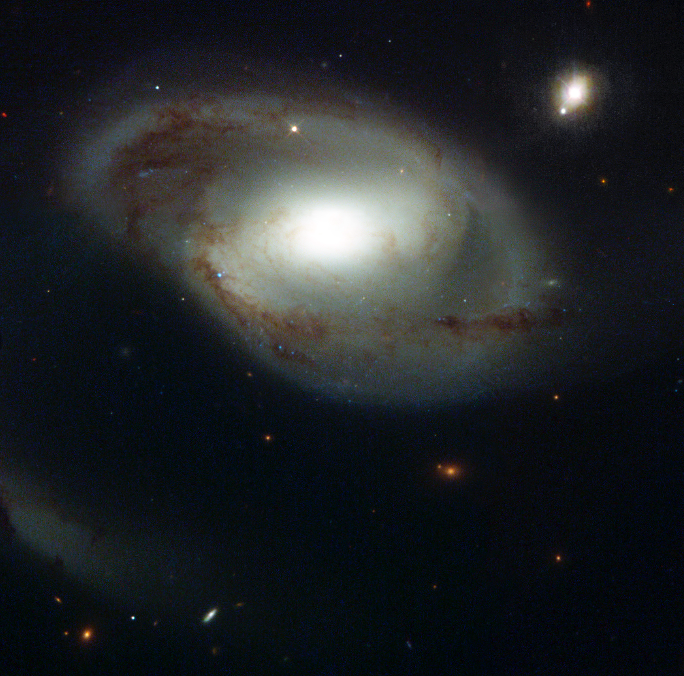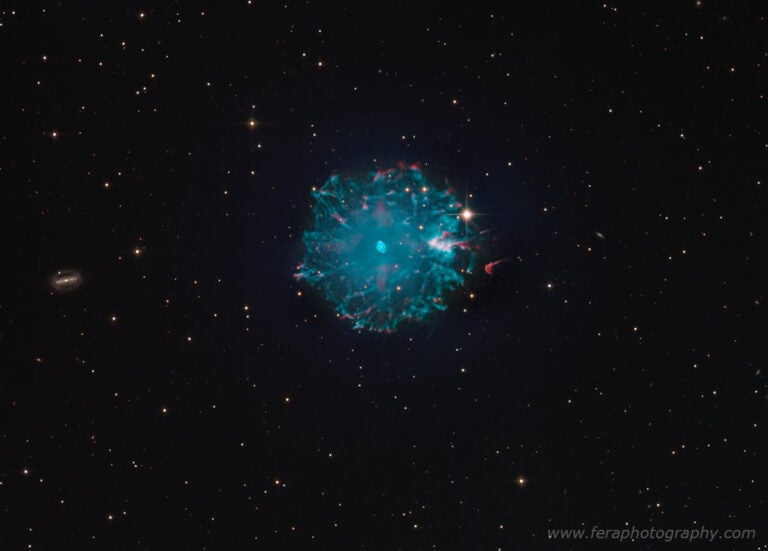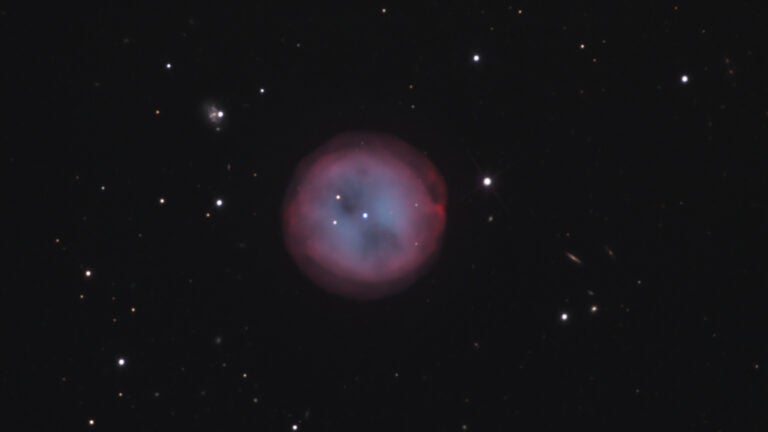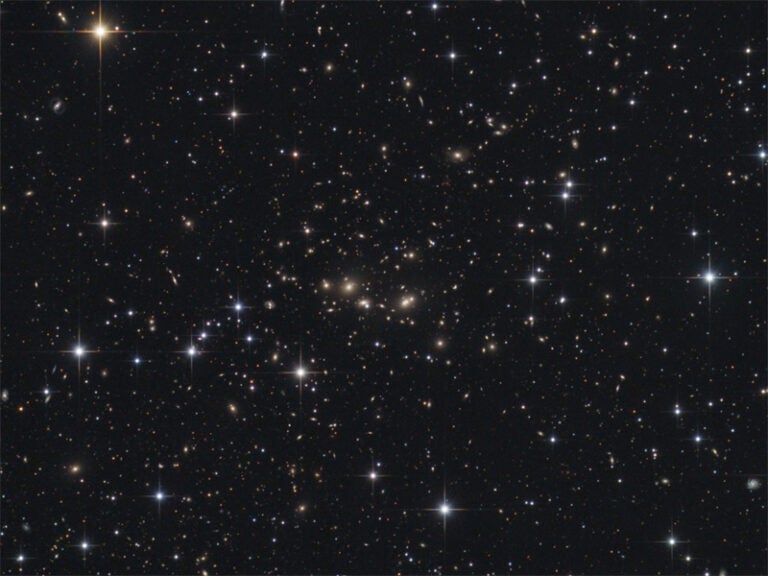M84
M84 is a member of a dynamic pairing with M86. A round giant elliptical galaxy some 80,000 light-years wide, M84 shines across 55 million light-years of space. It resides in the Virgo Cluster of galaxies, the nearest of the large extragalactic populations. This, of course, was unknown to Charles Messier when he discovered it on March 18, 1781, noting that its “center is pretty bright, surrounded by slight nebulosity.” Little has changed in astronomers’ descriptions of the object to this day.
Elliptical galaxies are one of three main classes of galaxies defined by American astronomer Edwin Hubble in 1936. They have no discernible structure except for their ellipsoidal shape. Nevertheless, they are among the most abundant type of galaxies in the universe and are usually found near the cores of galaxy clusters.
M84 is one of the more prominent ellipticals near the center of the Virgo Cluster. It has a compact nucleus and two warped dust lanes perpendicular to a radio jet that streams from the core in a north-south direction. This gas disk surrounds a black hole with a mass of about 1.5 billion Suns. M84’s outer halo appears smooth, dotted with prominent globular clusters. Its stars appear to be very old, dating back nearly 12 billion years.
To find this 10th-magnitude galaxy, look about 5° northwest of Rho (ρ) Virginis. Through small- to moderate-sized telescopes, the galaxy appears as a 5′ glow, slightly out of round with a stellar nucleus surrounded by a tightly packed core. In images, the core’s intensity is slightly enhanced by a superimposed 14th-magnitude star.
M84 is visually part of Markarian’s Chain, a string of eight galaxies that form a 1.5°-long line that shines like flying paper lanterns at the core of the Virgo Cluster. Armenian astrophysicist Benjamin Markarian discovered this feature in the 1960s, noting that these galaxies share a common motion though space. However, later observations have shown that M84 is not a dynamical member of the chain, as its motion does not jive with the rest.
M86
M86 is a 9th-magnitude elliptical/lenticular galaxy at the core of the Virgo Cluster, lying only 17′ from M84. Messier discovered it together with M84, saying the two “nebulae” had the same appearance. On the surface, they do. With its smooth-looking face, M86, like M84, gets gradually fainter the farther you look away from the core. And at a glance, M86 may appear only slightly larger than M84 through a small telescope.
But this is an illusion created by the galaxy’s lower surface brightness. M86 is, in fact, twice the apparent diameter of M84 and is slightly more elliptical. M86’s 400 billion stars span a whopping 135,000 light-years.
Aside from its sharp nucleus in a diffuse core, M86 is a visual “softy” — a porcelain-pure oval of diffuse light. Studies of M86’s core have revealed a slight dimming, which could suggest the core is surrounded by a dust ring or torus, though other studies have contested this.
M86 is tidally interacting with NGC 4438 (about 25′ to the east-northeast), and a nearly 400,000-light-year-long Hydrogen-alpha filament clearly connects them. While M86 does not have an apparent outer envelope, it does harbor some 3,800 globular clusters. It doesn’t seem to be interacting with its tiny companion NGC 4402, located about 10′ north of its core, though its halo has several streamers, suggesting it has consumed some of its other neighbors in the past.
While the majority of the Virgo Cluster is receding from the Milky Way, M86 is moving closer to our Milky Way Galaxy at 940,000 mph (1.5 million km/h). This is a consequence of M86’s orbit around the Virgo Cluster: The galaxy is currently on the far side of the cluster relative to us, and moving toward the cluster’s center.
Make sure to explore Astronomy’s full list of 101 cosmic objects you must see. New entries will be added each week throughout 2022.
To get the latest astronomical news and observing content delivered directly to your door, subscribe to Astronomy magazine today!

